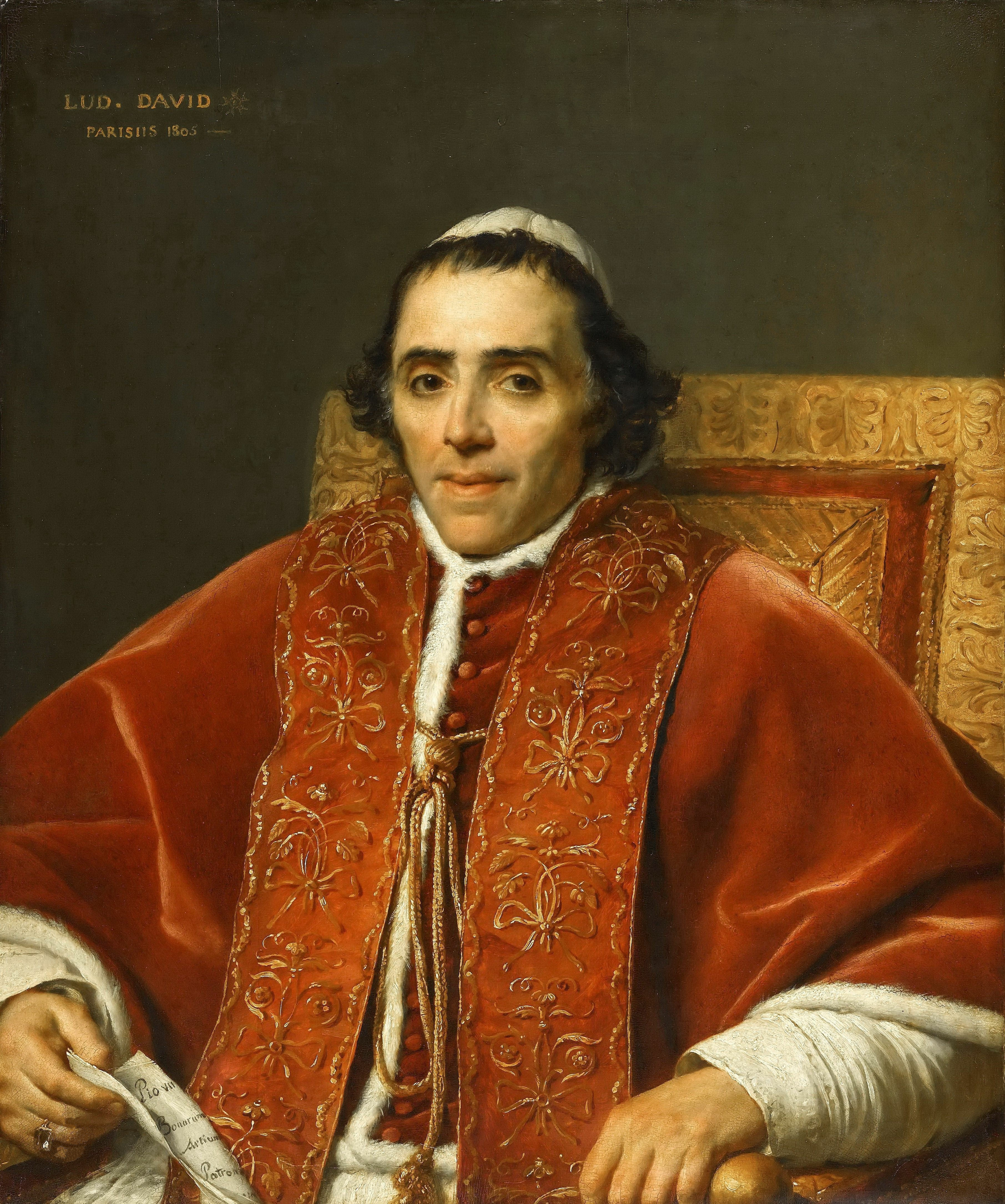The Pope Crowns His Enemy
 |
| Pope Pius VII by Jacques-Louis David |
Despite all the negotiations, despite the hopes and fears, despite the long journey from Rome to Paris, only a few days before it was to take place, it looked as if the coronation would not occur. As part of the ceremony the pope was to crown Josephine empress; however, Pius VII learned that Napoleon and Josephine had had only a civil marriage -- they had not been married in the Church. The pope told the couple that if they did not have their marriage blessed, he would perform no coronation. Unwilling to have a public fight with the pope, Napoleon reluctantly agreed to Pius's demand. On December 1, he and Josephine were married in a private ceremony at the palace of the Tuileries.
The next day, December 2, 1804, thousands gathered in the cathedral of Notre Dame for the great event that would make Napoleon Bonaparte the anointed of God. As the pope's throne before the high altar was being prepared, the ancient walls (hung with rich tapestries) and vault of Notre Dame echoed to the chanting of 400 priests. Adding to the splendor were the senators, counselors of state, and tribunes of France wearing hats topped with great plumes. Bishops and priests, adorned in rich, beautiful vestments, stood in the sanctuary while a host of lovely women, dressed in exquisite gowns and adorned with jewels, lined the aisles or sat in the wings. Napoleon had seen to it that his crowning would have all the glory of the ancient regime.
 |
| Napoleon I |
As the pope processed into the church, the choir took up the anthem, Tu es Petrus ("Thou art Peter"). As one eyewitness wrote, Pius VII "advanced from the door with an air at once majestic and humble." Upon reaching the choir, the pontiff mounted the throne prepared for him and awaited the arrival of the emperor.
The firing of a cannon announced that Napoleon had left the Tuileries palace. When at last he entered the cathedral, he was not the Little Corporal, nor the victorious general, nor the republican First Consul. Both he and Josephine were adorned as monarchs, in majestic robes of royal purple; a golden laurel wreath rested on Napoleon's dark hair. The emperor processed to the high altar and, with Josephine beside him, took his seat on the throne prepared for him. Pope Pius solemnly performed the ancient rite of anointing, placing the holy oils on Napoleon's head and each of his hands. The pope then began the prayer of consecration, which ended with these words: "Diffuse, O Lord, by my hands the treasures of your grace on your servant Napoleon whom, in spite of our unworthiness, we this day anoint emperor in your name."
 |
| Coronation of Napoleon and Josephine by Jacques-Louis David |
Then came the climax of the ceremony: the crowning. Napoleon had ordered that his crown would be an exact replica of the one Charlemagne had worn at his imperial coronation of old. According to the ancient ceremony, the pope was to take the crown from its place on the high altar and put it on the emperor's head. But as Pius turned to lift the crown from the cushion on which it rested, Napoleon stepped to the altar and seized the crown, lifting it high before all those assembled. He then slowly placed the crown on his own head.
 |
Detail from Coronation of Napoleon.
The artist added, by Napoleon's orders,
the detail of Pius's hand raised in blessing
|
During the crowning of Josephine, again by Napoleon, Pius sat on his throne, his hands resting on his lap, his eyes sad, his manner thoughtful. Then, after a long sermon by the archbishop of Paris, pope and emperor prepared to pass out of the cathedral. Both stood. Pius turned to Napoleon, and placing his hands on the emperor's shoulders and slightly inclining his head, he gave him the kiss of peace and uttered the words, Vivat Imperator in aeternum! ("May the emperor live forever.") ...
No comments:
Post a Comment